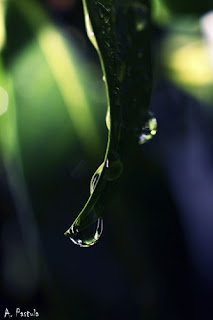Yesterday a beautiful red-colored gerbera in a pot moved into my room ;) The Gerbera belongs to the Asteraceae family and is also called African Daisy. The Gerbera is native to Africa, South America and Asia. The Gerbera is a common cut flower and decorative garden plant.
In the picture below you can see that gerbera has few rings of stamens and stigmas. The stamens represent male reproductive part of a flower and produce pollen, whereas the stigmas are female reproductive parts of flowers. While looking at the photo I was wondering why the pollen is yellow (in contrast to the white stigmas)??? The answer is easy – yellow color of the pollen comes from the flavonoids. Flavonoids are plant chemicals that are present not only in flowers, but also in fruits and leaves e.g. autumn leaves. Since flavonoids have antioxidant effects, probably they protect gerbera´s gametes against mutagenic effects of the ultraviolet radiation that is emitted by the sun.
The stamens (yellow) and the stigmas (white) of a gerbera.
Gerbera daisy in a pot.






















